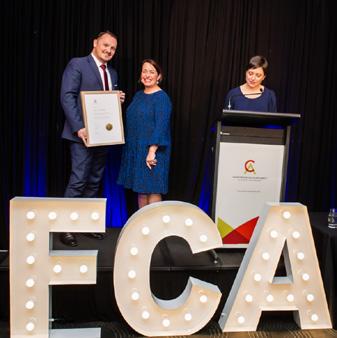I'M A DIRECTOR... GET ME OUT OF HERE!
Frank O'Neill - Director | MackayThis was the challenging situation facing a husband-and-wife team. The wife was “listed” as the company’s director and the husband as an employee, albeit one who made all company and financial decisions (i.e. a shadow director).
This is a familiar situation, and such structures should be reviewed regularly with your client’s advisors to avoid any nasty surprises. The purpose of this article is to highlight some of the key risks to consider when operating similar structures. We will leave the discussion of the difference between a shadow director and de facto director for a separate article at a later date.

The situation: Liquidators were appointed over the company. At the time of appointment, the wife was the sole director and it is understood that the original intention was to remove her as a director at some point in the future, but for a variety of unknown reasons, this process did not occur.
The Company, a provider of equipment hire to the mining industry, and the wife (as director) had provided several personal guarantees to the financiers. In addition, the Company was hopelessly insolvent for a number of months prior to the commencement of the liquidation and the liquidator had commenced recovery proceedings against the wife in relation to insolvent trading.
The financiers had also commenced recovery proceedings in relation to the personal guarantees which resulted in a default judgement and a very real threat of bankruptcy. Given the financial position, the wife approached SV Partners requesting we act as bankruptcy trustees.
Risks and responsibilities: The wife in this case was largely unaware of the responsibilities she owed to the Company, and the other potential financial recourses against her, including:
• Personal guarantees: she had signed a number of personal guarantees which allowed the financiers to pursue her personally for the shortfall in equity from the equipment sale;
• Superannuation and tax liabilities: the wife could have been held personally liable for unpaid superannuation and PAYG (pursuant to the director penalty regime); and
• Statutory duties: as outlined in the Corporations Act, all directors must act in good faith and in the best interest of the Company (including a duty to prevent insolvent trading).
Outcome: By applying some good bankruptcy smarts and working co-operatively with all stakeholders, we managed to negotiate a commercial settlement and avoid the wife from entering bankruptcy. Needless to say, she was very happy with the outcome, and subsequently on speaking terms again with her spouse.
Whilst this was an informal agreement between the stakeholders, the other two types of formal personal insolvency arrangements available to individuals without the need to declare bankruptcy are:
• Part IX Debt Agreement; and

• Part X Debt Agreement.
As mentioned, this is not an uncommon situation. Whilst there is merit in having your spouse as a director, it is a good idea to review this position with your advisor when required and proactively stay across matters in the business to ensure critical errors are not made.
There are several options available to individuals in tough financial situations apart from bankruptcy. All options should be fully discussed and explored with a qualified practitioner prior to entering bankruptcy.
As always, prevention is better than cure and being proactive often means that more options are available. Liability


Well, at the risk of losing all my readers by leading with my conclusion, it is probably too early to say, as we still lack sufficient data and statistics collected over enough quarters, and enough appointments, to adequately judge the outcome of such things as the longevity of businesses having undergone an SBR (Small Business Restructure), the number of jobs saved and the average return to creditors compared with liquidations.
BUT, if I can entice you to read a little longer, we can assess, albeit more anecdotally, some of the unexpected benefits that are being discovered from the process.
The Small Business Restructuring Process (SBRP) program was introduced in Australia to assist struggling small businesses. This relatively new program, commencing in January 2021, aims to offer a more streamlined and less costly alternative to traditional insolvency procedures, ideally allowing more businesses to access restructuring services and ultimately survive financial distress.

We knew some of the benefits of the SBRP would include the director remaining in control of the business during the restructure, lower fees due to a more streamlined appointment and less reporting requirements of the practitioner, as these were objectives during the design of the program. However, some of the further benefits we are seeing, beyond those initially envisaged, include:
1. The ATO understands the process well and is eager to engage with the restructuring practitioner early in the process.
I recall my first contact with the ATO on my first SBRP, where I expected to have to explain what SBRP was, why it was different to liquidation and what I needed from them (failing which the plan of course was to hang up and try again with someone new). Entirely contrary to this, the ATO representative was well versed in the SBRP process and transparent about the process they would follow in a typical SBRP case.
Throughout a proposal period of the SBRP appointment, and prior to circulating the plan to creditors, a practitioner has an opportunity to provide a draft plan to the ATO for discussion, allowing the ability to explain and refine the plan, as well as gauging the ATO’s likely position on the plan.
It now seems strange that such access is not consistently offered for voluntary administrators to discuss proposed deeds of company arrangement, despite the stakes often being far greater.
2. Relevant for those living in God’s country, the Queensland Building and Construction Commission (QBCC), is not treating the appointment of an SBRP as triggering an automatic exclusion of a company holding a building license (i.e. causing the suspension and then termination of the license).

Contrary to insolvency appointments, such as liquidations or voluntary administrations, which immediately trigger a suspension of a licensed company’s QBCC license, the SBRP does not.
This makes the SBRP unique as a restructuring tool for building companies, which otherwise had very limited restructuring options available to them. This could be why the construction industry is among the top industries taking up the SBRP.
3. There has been an excellent approval rate for plans proposed by companies.
Early statistics showed that approval rates of plans were as high as 92% (this statistic relates to the proportion of plans accepted from those actually sent to creditors).
The statistics here are still a little fresh and no doubt the high success rate will temper somewhat, but these figures at least suggest a willingness by major stakeholders such as the ATO (who were a major creditor in 70% of the SBRPs undertaken in the first 18 months of its existence) to give this process a go.
There are certainly criticisms of the restructuring tool also, such as those aired by the Australian Restructuring Insolvency and Turnaround Association (ARITA), however these tend to relate more to the complexity of the legislation and process rather than on the results being achieved. Whilst I agree with the criticisms raised by ARITA and its proposed solutions, which are likely of interest to few outside of the profession, I believe the SBRP is already providing restructuring solutions to businesses that otherwise may be priced out of professional restructuring services altogether.

As for the deeper analysis of the success, or otherwise, of the SBRP, I will have to offer you all an ‘IOU’ for now. This will be something I revisit in the next 18 months when we have far more material to draw upon.
For more information about the Small Business Restructuring Process, contact us today to speak to an expert who can assess your situation by calling our confidential assist line on 1800 246 801.




































